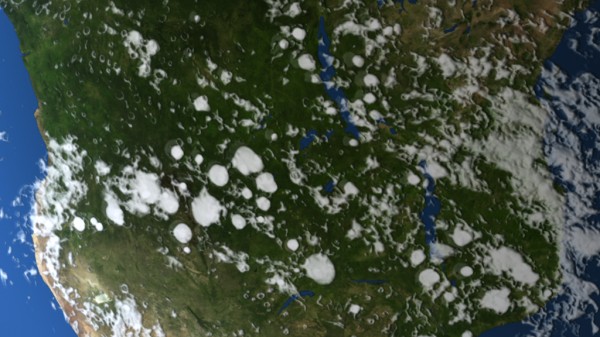A Less Hardy Hardiness Map

The USDA has unveiled a new version of its plant hardiness map, which gardeners use to gauge which plants will survive in which climate zone. (Check your nearest seed packet.) In the newest iteration, many zones have shifted northward because winters aren’t as cold as they were 22 years ago when the agency last updated the map — good news if you’re trying to grow, say, figs in Boston. On the new map, most parts of the United States are a half-zone warmer — about 5 degrees Fahrenheit (2.7 Celsius). Global warming surely underlies much of the change, but theUSDA points out that more sophisticated mapping techniques, plus the inclusion of data from additional weather stations, has also affected the distribution of the zones.
Why the Arctic Ocean Isn’t Freshening
Rapid freshening on the North American side of the Arctic Ocean in recent decades has prompted speculation that rapid melting of sea ice might be causing a slowing of the “conveyor belt” that keeps water circulating through the world’s oceans. New research led by scientists at the University of Washington helps allay such fears. The researchers conclude that freshwater from the Eurasian part of the Arctic Ocean, which comes originally from rivers in Russia, has simply found a new route that brings more of it toward Canada. The cause for the new freshwater route: changes in winds associated with a weather patternknown as the Arctic Oscillation. In fact, the analysis of satellite and oceanographic data shows that overall salinity in the Arctic Ocean remained constant between 2005 and 2008; as the Canadian portion became fresher, the Eurasian portion grew saltier. The shifting path of the fresh water is shown in red in the animation below.
[yframe url=’http://www.youtube.com/watch?v=y8diuqAI6YA&feature=player_embedded’]
Temperature Ranking-palooza
There’s always a flurry of media activity in January when scientists at NASA, NOAA, and the UK Met Office tally up the year’s temperature measurements and rank how warm the past year was. This January was no exception. In NASA’s analysis, 2011 came in as the 9th warmest year on the modern meteorological record. However, the longer-term trends are what really matter. Look at the whole record – and here are a fewinteractive charts that are useful for doing that – and it’s clear that the last decade has been the hottest on record. Another remarkable stat: 9 of the 10 hottest years have occurred since 2000. For more details, the science team that manages NASA’s analysis has published a thorough temperature update here.
Earth Observatory, January 2012






